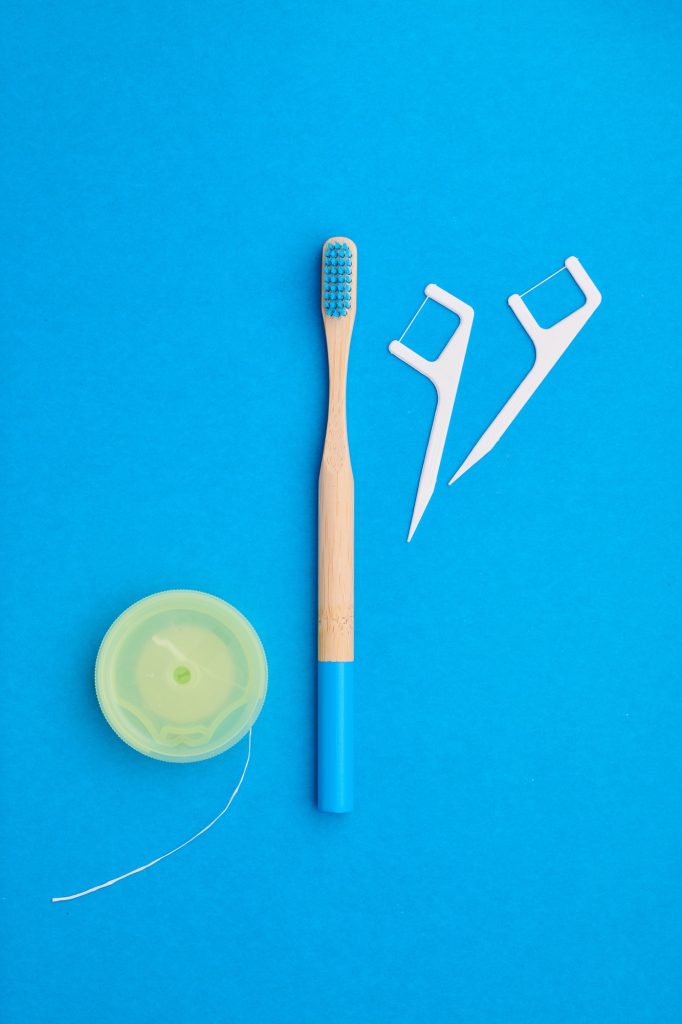

Proper flossing techniques to get the most when you floss.
How Often Should You Floss?
Floss daily if you want to effectively remove the plaque from places between your teeth where flossing can go where your toothbrush can’t. If you’re not flossing, plaque that isn’t removed hardens into calculus or tartar and eventually can lead to cavities. Plus flossing helps fight cavities and prevent gum disease.
Floss Before or After Brushing?
It doesn’t really matter if you floss before or after you brush or the time of day when you floss. The important thing is to just do it! Many people think they should floss just before they go to bed and end up never flossing because they are always too tired at the end of the day. So pick a time when you have a couple of extra minutes every day and floss.
Nylon or PTFE Floss?
There are two types of floss to choose from. Nylon floss or PTFE floss. Nylon floss is made of multiple strands of nylon, so it sometimes tears of shreds if you have tight teeth. You can get it waxed or unwaxed depending on your preference. PTFE floss is more expensive but slides between your teeth easier, especially if the spaces between your teeth are tight. It generally won’t shred.
Flossing Flawlessly
Gum disease begins at the gum line and between teeth. Daily flossing is an important part of your oral health care routine to help remove the plaque from these areas where a toothbrush doesn’t completely reach. But to truly reap the benefits, you need to use proper flossing technique.
You can floss flawlessly if you follow these four easy steps, according to the American Dental Hygienists’ Association:
- Wind: Wind 18 inches of floss around the middle fingers of each hand. Pinch floss between thumbs and index fingers, leaving a one- to two-inch length in between. Use thumbs to direct floss between upper teeth.
- Guide: Keep a one- to two-inch length of floss taut between fingers. Use index fingers to guide floss between contacts of the lower teeth.
- Glide: Gently guide floss between the teeth by using a zig-zag motion. Don’t snap floss between your teeth. Contour floss around the side of the tooth.
- Slide: Slide floss up and down against the tooth surface and under the gum line. Floss each tooth thoroughly with a clean section of floss.
Toss the floss once you’re finished. Remember, flossing should not hurt when you do it. If it does, you may be in jeopardy of damaging the tissue between your teeth. You’ll probably feel some discomfort when you first start flossing, but after a week or two, the discomfort should go away. Recurring pain means you should get in touch with your dentist.
Flossing With a Flosser
Some people prefer to use a flosser for convenience. Hold the flosser handle firmly and point the flossing tip at an angle facing the area you want to floss first (either top teeth or bottom teeth). Guide the floss gently between two teeth, and be sure to avoid snapping or popping the floss. Use the same zigzag motion that you would use with standard floss. Bend the floss around each tooth and slide it under the gum line and along each tooth surface.
Don’t Forget the Kids Need To Floss Too!
If you have a child that has at least two teeth that touch, you should be flossing their teeth. You usually have to wait until they are around 10 years old before they can handle this daily oral health routine themselves.
Sources: MouthHealthy.org, Oral B, Colgate, American Dental Association